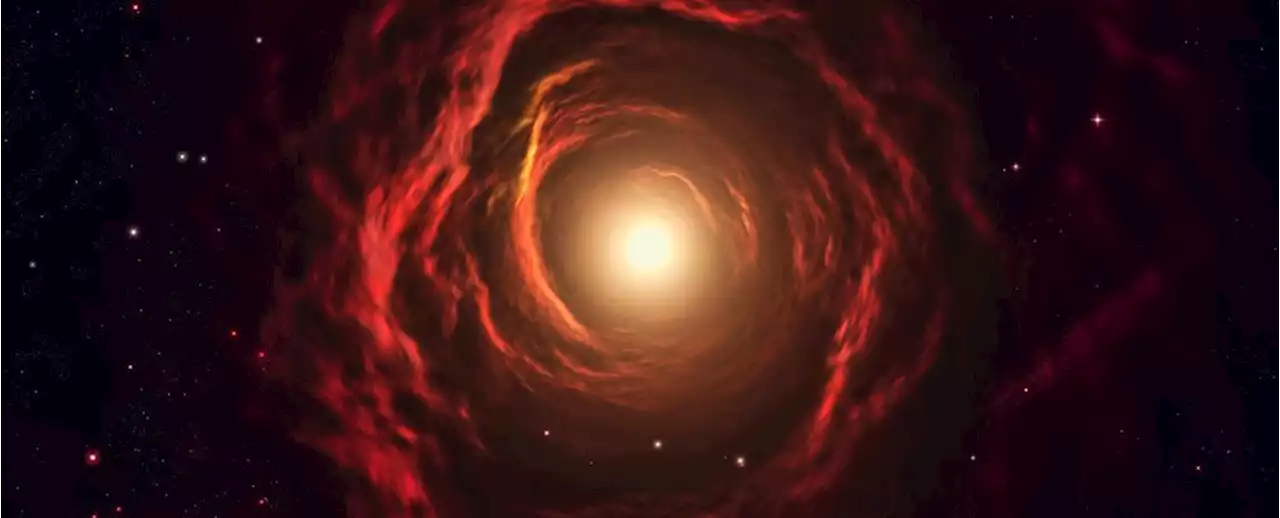Turns out, the 'Cosmic Dawn' of our Universe ended far later than we thought. 😱 An international team of astronomers used the light from dozens of quasars to determine when the last major wisps of hydrogen 'fog' burned away. Read more:
For tens of millions of years, our newborn Universe was shrouded in hydrogen. Bit by bit, this vast mist was torn apart by theHaving a timeline for this colossal shift would go a long way in helping us understand the Universe's evolution, yet so far our best attempts have been fuzzy estimates based on low-quality data.
Soon the entire Universe was filled with uncharged atoms, a sea of them bobbing back and forth in the infinite darkness. Studies conducted more than 50 years ago made use of the way light from violently active galactic cores was absorbed by interceding gas floating about in the nearby intergalactic medium. Find a series of quasars stretching into the distance, you can effectively see a timeline of neutral hydrogen gas being ionized.
According to their own figures, the last dregs of original hydrogen fell to the rays of first-generation starlight around 1.1 billion years after the Big Bang.
United States Latest News, United States Headlines
Similar News:You can also read news stories similar to this one that we have collected from other news sources.
 The 'Cosmic Dawn' of Our Universe Ended Far Later Than We ThoughtFor tens of millions of years, our newborn Universe was shrouded in hydrogen. Bit by bit, this vast mist was torn apart by the light of the very first stars in a dawn that defined the shape of the emerging cosmos.
The 'Cosmic Dawn' of Our Universe Ended Far Later Than We ThoughtFor tens of millions of years, our newborn Universe was shrouded in hydrogen. Bit by bit, this vast mist was torn apart by the light of the very first stars in a dawn that defined the shape of the emerging cosmos.
Read more »
 Cosmic 'dust' from supernovae hints at how stars are bornNew research detected strong polarization from a young supernova remnant. It provided independent and solid evidence that the cosmic dust in the early universe was formed in supernovae. While it's true that supernovae eject and destroy cosmic dust, infrared observations now suggest that the dust formed at an early stage of a supernova. SOFIA HAWC+ (Stratospheric Observatory for Infrared Astronomy High-Resolution Airborne Wideband Camera Plus) Band D observations of the young supernova remnant (SNR) Cassiopeia A (Cas A) show high polarization at the 5-30% level. This polarization indicates:
Cosmic 'dust' from supernovae hints at how stars are bornNew research detected strong polarization from a young supernova remnant. It provided independent and solid evidence that the cosmic dust in the early universe was formed in supernovae. While it's true that supernovae eject and destroy cosmic dust, infrared observations now suggest that the dust formed at an early stage of a supernova. SOFIA HAWC+ (Stratospheric Observatory for Infrared Astronomy High-Resolution Airborne Wideband Camera Plus) Band D observations of the young supernova remnant (SNR) Cassiopeia A (Cas A) show high polarization at the 5-30% level. This polarization indicates:
Read more »
 The 'Cosmic Dawn' of Our Universe Ended Far Later Than We ThoughtFor tens of millions of years, our newborn Universe was shrouded in hydrogen. Bit by bit, this vast mist was torn apart by the light of the very first stars in a dawn that defined the shape of the emerging cosmos.
The 'Cosmic Dawn' of Our Universe Ended Far Later Than We ThoughtFor tens of millions of years, our newborn Universe was shrouded in hydrogen. Bit by bit, this vast mist was torn apart by the light of the very first stars in a dawn that defined the shape of the emerging cosmos.
Read more »
 Most Billionaires Don’t Think Employees Will Stay Fully Remote, Forbes Survey ShowsForbes surveyed 65 of the world’s richest people and found just over half (52%) believe “hybrid” models that allow employees to mix in-person and remote work will be the way of the future.
Most Billionaires Don’t Think Employees Will Stay Fully Remote, Forbes Survey ShowsForbes surveyed 65 of the world’s richest people and found just over half (52%) believe “hybrid” models that allow employees to mix in-person and remote work will be the way of the future.
Read more »
 Leaker says Galaxy Watch 5 could be the 'ugliest' smartwatch of the yearIce Universe has curtly said that the Galaxy Watch 5 will not be aesthetically pleasing and you should not think about buying it.
Leaker says Galaxy Watch 5 could be the 'ugliest' smartwatch of the yearIce Universe has curtly said that the Galaxy Watch 5 will not be aesthetically pleasing and you should not think about buying it.
Read more »
 The Wendy Williams Show Is Ending Sooner Than You Think - E! OnlineA spokesperson for The Wendy Williams Show confirmed the syndicated talk show will pay tribute to Wendy Williams in the final episode, hosted by her replacement Sherri Shepherd.
The Wendy Williams Show Is Ending Sooner Than You Think - E! OnlineA spokesperson for The Wendy Williams Show confirmed the syndicated talk show will pay tribute to Wendy Williams in the final episode, hosted by her replacement Sherri Shepherd.
Read more »
